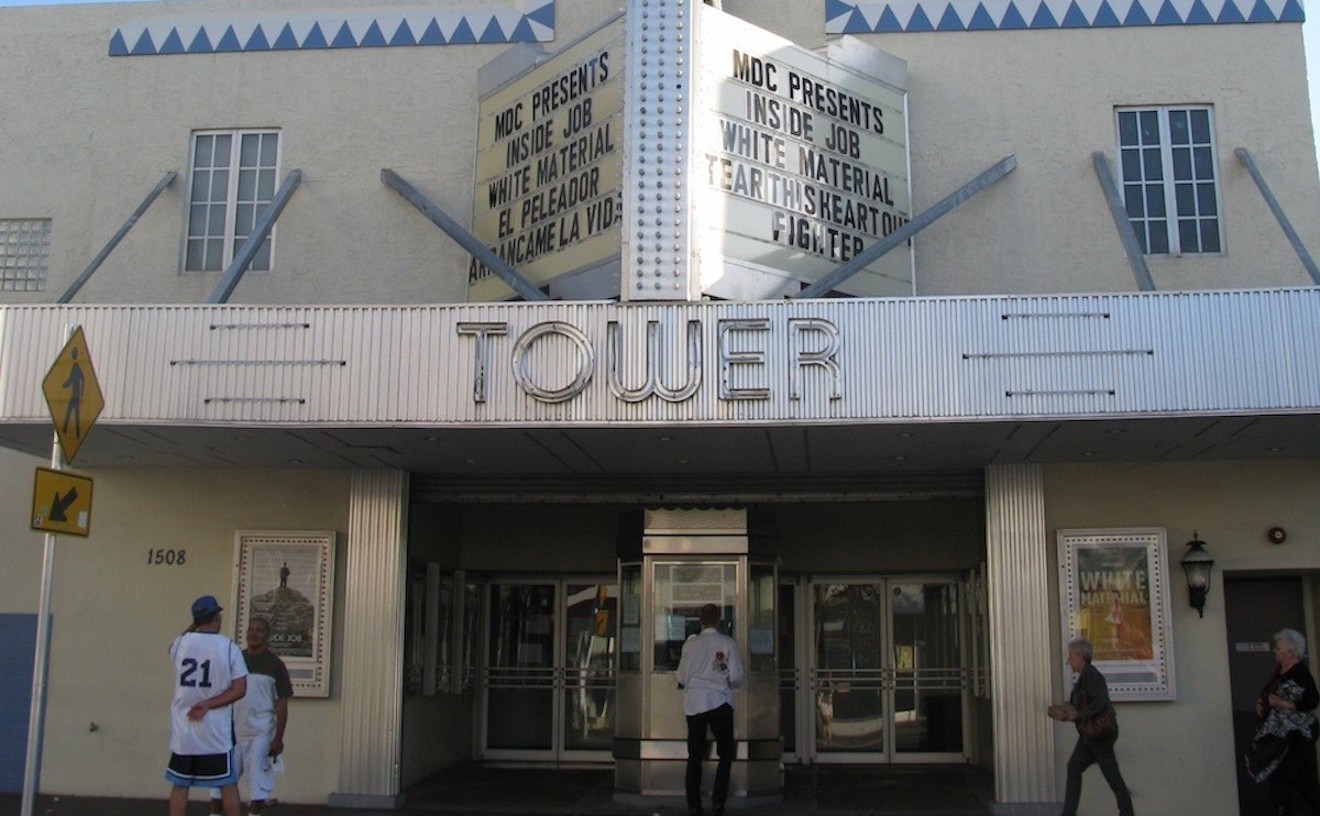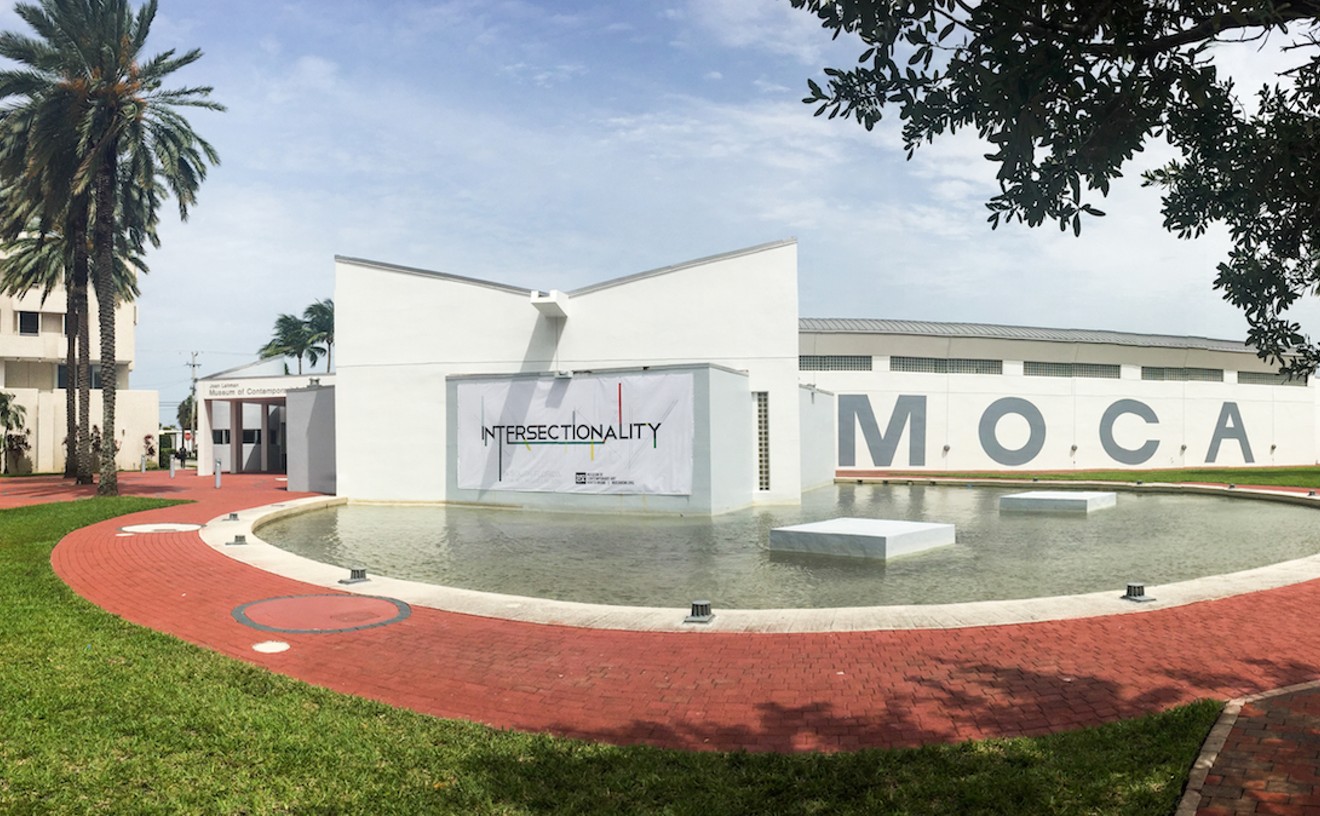Best Artist
Pablo Cano
When he's not dumpster-diving or rifling through the shelves of his favorite thrift stores, Pablo Cano can be found in the garage behind his Little Havana home turning junk into art while listening to Cole Porter songs, Tin Pan Alley tunes, and other favorite ditties. Like the toy maker in Pinocchio, this conceptual Gepetto creates enchanting marionettes out of the trash he collects or the sundry castoffs his friends from all over the world bring to his back-yard studio when they visit. Inside his refuse refuge, Cano creates his own version of the Mona Lisa using a candy box for her head, a birdcage for her torso, and bits of rope for her joints. His Cecil B. DeMille-esque cast of characters might include oceanic sirens, '20s flappers, or dancing ants. To make a bull shine in the ring, he coated the animal's hide with a stash of gold cigarette foil paper he regularly receives in the mail from a growing legion of fans. Exhibited in museum shows across the globe, each of his puppets is a complex sculpture all its own. But for more than a decade, Cano has also produced fantastical operatic opuses in which his beguiling creations roar to life. Every year for the past 12 years, the Museum of Contemporary Art has commissioned Cano to create lavish productions that combine his marionettes with elaborate stage sets he paints or draws and the music he loves, conjuring magical displays that mesmerize art lovers both young and old. The Cuban-born artist says his productions — which employ choreographers, dancers, actors, and musicians — spring from his imagination in the surrealist tradition while his work is rooted in dada ideals. Whatever the source of his inspiration, Cano is the rare artist who, like Peter Pan, can transport spectators to otherworldly realms and help them rediscover a childlike wonder through his unforgettable characters meticulously rendered out of trash.
Best Public Art
Sonni's Boombox
If you need an actual boombox, check Sony. If you need a building painted like some sort of fantastic cartoon boombox, check local artist Sonni. As part of the annual Primary Flight installation of murals throughout Wynwood during Art Basel week, Argentinian-born Adrian Sonni set out to turn an abandoned two-story building into a whimsical boombox, complete with grinning musical notes, painted in bright shades of primary colors. The makeover keeps the building from falling prey to less aesthetically pleasing graffiti and, by virtue of being clearly visible from I-95, gives drivers a reason to smile during a painful commute.
Best New Trend
Independent cinemas

Photo courtesy of Tower Theater
Cinephiles, rejoice! Though it sucks we'll have to wait another year to see kick-ass local films at the Borscht Film Festival, with the recent rise of art houses in SoFla, we'll be able watch indie flicks from all over the globe on the reg. Right here in Miami, ogling at handsome leading men such as Cary Grant, fashion weathervanes like Bill Cunningham, new cool crap from Cannes and Toronto, and crazy foreign zombies on the big screen is becoming the norm. This new wave of art-house openings is bringing classics and future classics to all corners of the city. O Cinema has staked its spot in the trendy art center of Wynwood, the Tower Theater has Little Havana under control with artsy films in Spanish and English, and Gables Art Cinema is spicing up the City Beautiful with some serious and controversial films. Bill Cosford Cinema isn't just for University of Miami students — it has what movie nerds need — while the Miami Beach Cinematheque screens the widest variety of fancy stuff at its new home inside the historic Miami Beach City Hall.
- 1508 SW Eighth St., Miami, 33135 Map
- 305-237-2463
- www.towertheatermiami.com
Best Film Festival
Optic Nerve Festival

Courtesy of the Museum of Contemporary Art
Well, you've finally done it. You've let your optic nerve atrophy. Now your vision is dim, colors seem faded, and your neighbor caught you trying to pet a brick you thought was a cat. The worst part is you'll never get to bask in the heady visuals of the Museum of Contemporary Art's Optic Nerve Festival. For ten years, the short-film fest has screened Miami's most cutting-edge video artists. Last year, the 22 films were so inspired that MOCA chose three instead of just one for its permanent collection. Gold lamé-clad alter egos exercise in Susan Lee-Chun's Let's Suz-ercise! A beachgoer encounters an aggressive sea horse in Justin H. Long's In Search of the Miercoles, playing off conceptual artist Bas Jan Ader's In Search of the Miraculous. And artist Autumn Casey purges her closet's contents onto blighted Miami streets in Getting Rid of All My Shoes. With each film clocking in at under five minutes, the night is a dizzying onslaught of sound and light, and every year hundreds of viewers cram in to give their optic nerves a workout.
- 770 NE 125th St., North Miami, 33161 Map
- 305-893-6211
- mocanomi.org
Best Art-House Cinema
Coral Gables Art Cinema

Courtesy of Coral Gables Art Cinema
The Aragon Avenue block between Salzedo Street and Ponce de Leon Boulevard already boasts Books & Books and the Coral Gables Museum. But with the arrival of the Coral Gables Art Cinema across the street, the strip has become a mini cultural mecca. And among the recent boutique movie theaters opened in Miami in the past couple of months, the Gables art house stands out for doing just about everything right. It threw open its doors last fall with the Florida premiere of Freakonomics and continues to nab indie and foreign flicks before they hit the multiplexes. But the programming extends beyond the silver screen via special events. Canines were invited to the opening night of My Dog Tulip, an animated movie about a man and his German shepherd. And when Phil Ochs: There But for Fortune opened, Coral Gables Art Cinema paired the doc with an open bar, free food, Folk Club of South Florida performances, and an interactive, live telecast with Ochs director Kenneth Bowser. The theater even has small-scale stadium seating (just enough to give unobstructed views but not so much as to induce vertigo), and films screen for a week or more — meaning there's ample time to hear about a great flick playing and then get your procrastinating ass to the theater.
- 260 Aragon Ave., Coral Gables, 33134 Map
- 786-385-9689
- www.gablescinema.com
Best Cultural Project
The End/Spring Break
Codependency is normally considered a bad thing, but sometimes, when it allows people to produce creative ventures or share their smarts, it becomes a dysfunction that's kinda sweet. The End/Spring Break is a nomadic art project and proud enabler of Miami's grassroots cultural scene. Organizers Domingo Castillo, Patti Hernandez, and Kiwi Farah have created an innovative project that is accessible, productive, and amazing — plus money-making. Spring Break takes place during South Florida's busy season (winter), and the End happens during the sweltering summer, when no one wants to be here. Launched in the past year, the project has hosted more than a hundred events for thousands of people. The End/Spring Break's organizers fill unused spaces with traditional and innovative events. They've hosted film screenings of high- and lowbrow flicks (think Werner Herzog and Encino Man), kimchi-making demonstrations in an art gallery, poetry readings (one was from Ballerz, a journal of basketball poems), talks about the history of punk in Miami, and live musical performances. The locations are offered to the project for free and have included spots such as the Bas Fisher Invitational and a booth at the Miami International Art Fair.
Best Leisure Activity Other Than Clubs or Movies
New World Center

Whatever is playing on the outdoor screen of New World Center's 2.5-acre public park, Soundscape, is probably better than the romantic comedy you're thinking about watching at Regal. It's also cheaper — as in free — and easier to sneak in a bottle of wine. In fact, bring a whole picnic basket and really impress your date. Maybe even surprise that special person with tickets for a postdinner orchestral performance by the New World Symphony inside the Frank Gehry-designed architectural masterpiece. Hello, culture.
- 500 17th St., Miami Beach, 33139 Map
- 305-673-3331
- nws.edu/new-world-center
Best Movie Shot on Location
American Zoe: 44 Blocks Away
Little Haiti is a hood notorious for crime and impoverishment. Every block seems to have a dope hole, a church, a school, and a liquor store. The truth is, although criminal activity abounds on the streets, it's also a working-class neighborhood full of law-abiding people. All the drugs and guns, however, leave young residents with a dilemma: Thug it out and get rich or die trying, or work toward something greater. No movie has so realistically depicted Little Haiti, its citizens, and their customs as American Zoe. The fictional film's documentary style and its success are a direct result of producer Jonas Antenor's involvement. He and his friends, all Little Haiti residents, along with award-winning playwright Susan Kari, collaborated to achieve a socially realistic vision of the streets with a powerful narrative and a happy ending. That 17-year-old Antenor and four other teens were found dead of carbon monoxide poisoning in a Hialeah motel December 28, 2010, is tragic, but this great movie lives as a tribute to the community they loved and the story they chose to tell about it.
Best TV Show Set in Miami
Basketball Wives
Sure, scripted series such as Burn Notice and Dexter might do a stand-up job of representing rich and interesting but ultimately fictionalized versions of the Magic City, but it's been a long while since the small screen has captured a more realistic and recognizable side of the city. You know, the side obsessed with image, status, gossip, and catty back-biting. The side that slips itself into a tube dress two sizes too small and paints its acrylic nails fuchsia only to have them broken off later that night during an impromptu bitch-slap fest. For that, you have to turn to VH1's Basketball Wives. The cadre of groupies, exes, and wives of NBA players assembled by executive producer (and Shaq's ex) Shaunie O'Neal doesn't make for the most intellectual programming on television, but these folks sure are more entertaining than all of those other vapid reality shows set in Miami. How can you watch the air-humpingly happy Royce Reed square off in verbal tiffs against Evelyn Lozada (who exudes a certain effortless I'm-the-head-bitch-and-I-know-it vibe that's so necessary for good reality television) and not be entertained? Sure, other shows set in the 305 might have more cultural value, but few really represent a certain segment of our culture quite so well. Ask yourself when was the last time you walked around town and saw a spy shootout or serial killing spree. Now, when was the last time you saw a chick with too many rhinestones and an entitlement problem? You're probably within 30 feet of one right now.
Best Hurricanes Basketball Player
Shenise Johnson
Long before the University of Miami was known as "the U" and when Hurricanes football players were more chumps than champs, it was the Lady Canes who brought athletic glory to the school. The women's golf and swim teams won multiple national championships in the '70s. Now with the football team in a (let's hope temporary) rut, it's the ladies once again who are the pride and joy of Hurricanes athletics. Unquestionably, the women's basketball team was the best on campus this year, and it's in no small part thanks to Shenise Johnson. The Canes won the ACC regular-season championship and skyrocketed to the national top ten, while Johnson netted honors as ACC Player of the Year. She was the only player in the conference to land in the top ten for average points, rebounds, and assists. Shenise and her talented teammates ended the regular season with a 26-3 record. Hell, forget best team on the Coral Gables campus. Considering the Heat's sometimes struggles, Johnson might just be leading the best team in all of Miami.





